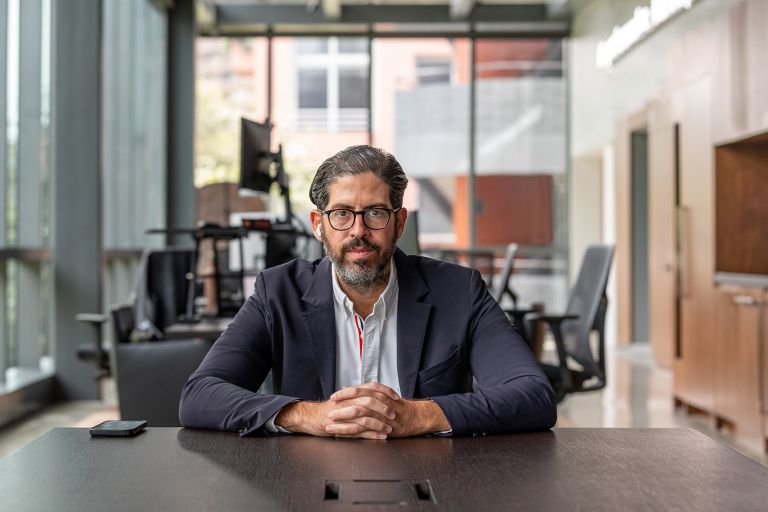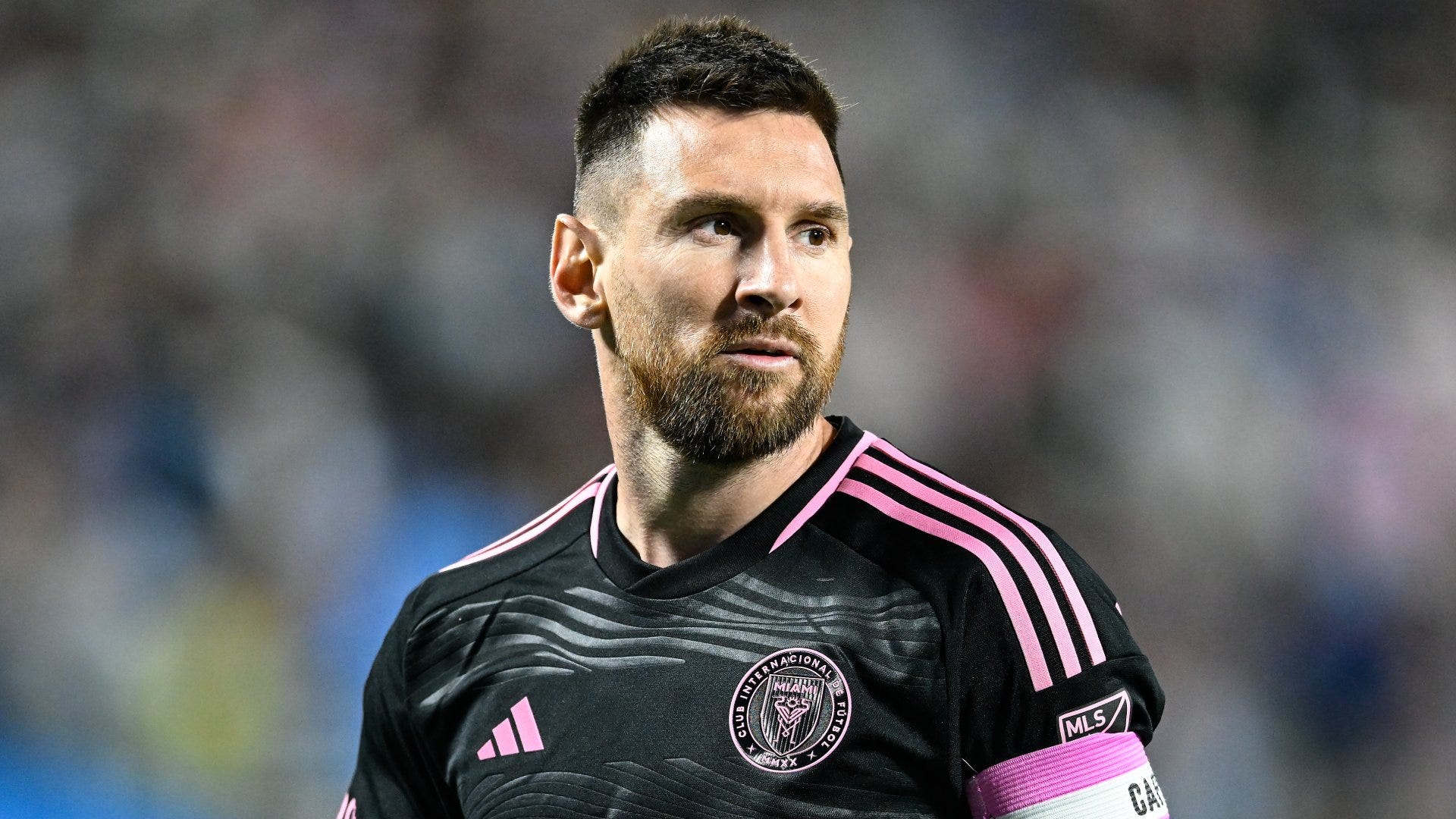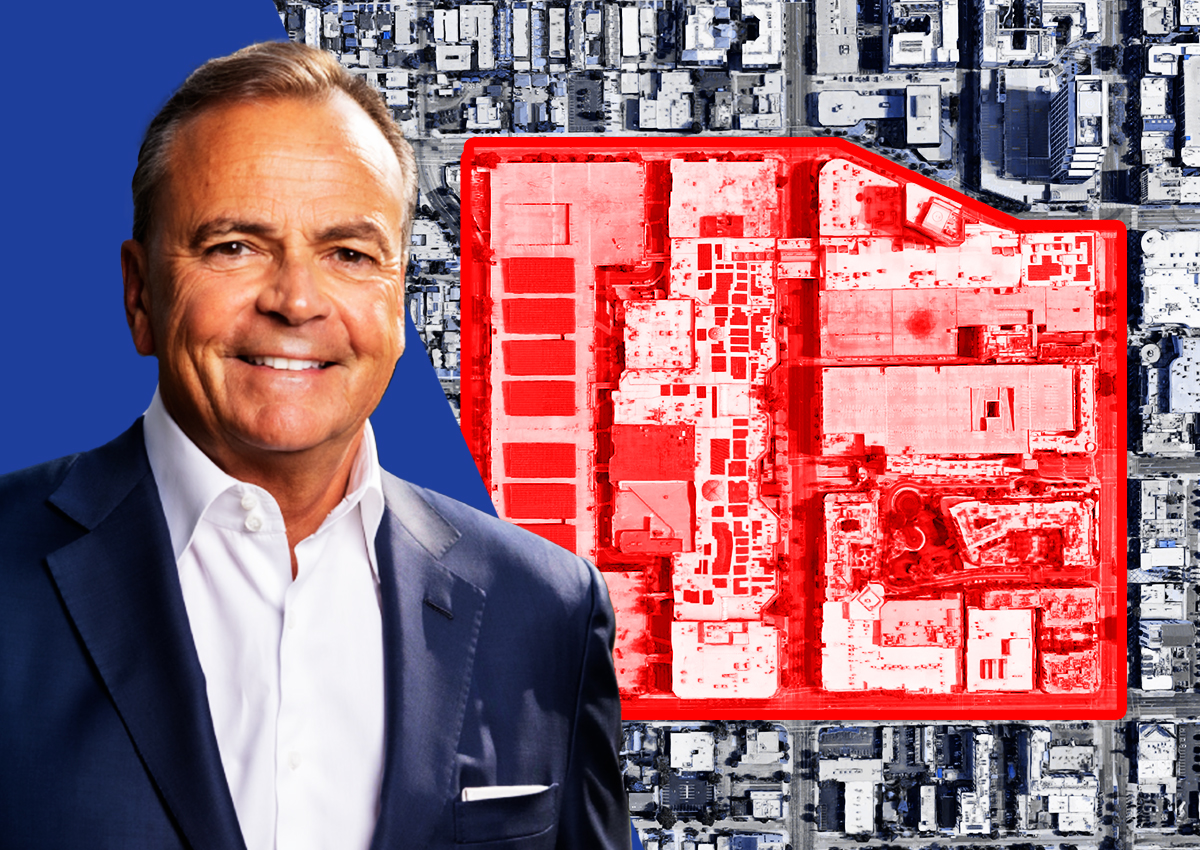Terra Group’s David Martin On South Florida Development Now and Then – Commercial Observer
If you follow Miami’s buzzing commercial real estate market, chances are you know David Martin’s name. His firm, Terra Group, is more than two decades old, and his portfolio — as well as his career — has evolved alongside the significant changes within the city’s four walls over the past two decades. The Global Financial Crisis was both a time of expansion for Terra’s portfolio and a time of learning for Martin — with lessons that have informed his investment decisions since.
Today, Terra’s portfolio is a well-diversified and enviable one, with residential, commercial, multifamily and mixed-use assets — such as Five Park, Mr. C Residences, Grove Central, Miami Beach Convention Center Hotel, Upland Park and Natura Gardens — spanning South Florida’s most coveted hot spots. But as investment dollars continue to pour into Miami, Martin is busy prioritizing a conscious approach to development and community engagement — one that stretches back to his college days.
This interview has been edited for length and clarity.
Commercial Observer: How did Terra Group get its start?
David Martin: My grandparents are Cuban and immigrated here in the 1960s. My father went to the University of Florida, and was one of the first attorneys to join Greenberg Traurig in Miami in the mid-’70s. I started Terra in 2001 with my father, but he was also a banking and real estate corporate attorney and a great mentor for decades. It was great just having his support, reliability and integrity to guide me.
When I started the firm I had an executive suite at 1200 Brickell — the same building as Greenberg Traurig was in — but on a different floor. Greenberg was a great resource for me early in my career because our business is very legal intensive — whether it’s JV docs, loan docs, leases or reciprocal easement agreements. When I started, my father was more of an attorney, and then we embarked on this journey of a development firm together. And it was definitely a journey [laughs].
How were the early days as you were finding your feet?
We grew with the evolution and growth of the city. Our firm is somewhat focused on Miami and South Florida, and back then I was learning a lot about the city and the changes that were happening within it. There was urbanization, and Miami was also becoming more cosmopolitan and more culturally interesting. So those things informed a lot of the decision-making that we made early in the neighborhoods we were building in. There are sayings like “If you knew then what you know now,” but overall I learned so much. I had a lot of mentors that I learned a lot from — Alicia Cervera [founder of Cervera Real Estate] is one.
I had two projects in Miami Beach in 2001 and 2002, then I started getting into downtown and more transformative projects. For me, the first 10 years was a refinement of the business case of real estate, which has a lot to do with maximization of a site, and focusing on a financial return. As my career and as the company evolved and grew — at our peak we were 120, we’re maybe 100 people today — we refined our thesis, but then we got hit with the shock of the crisis in 2008 and 2009. That was an amazing experience for me. I learned about scarcity, what oversupply can do to destabilize a real estate market, and how one thing can impact others. I think every financial crisis not only builds character but informs an improvement or an enhancement to your business. I started realizing from an economic standpoint that I wanted to build neighborhoods.
What were some of the key opportunities that you were seeing around that time?
During the financial crisis, we bought a 250-acre golf course and bought notes and whatnot, as a lot of institutional companies were unloading properties and notes. I started to diversify the portfolio at that time and started thinking more about neighborhoods and communities. I also started seeing the demand and what was possible. Even though there was distress, there was also competition, so we branched out at that time to many different neighborhoods.
We adopted a “less is more” approach and focused on neighborhoods that had restrictive zoning with high barriers to entry like historic preservation — take Miami Beach and Coconut Grove, for example. The GFC taught me that sometimes maximizing development rights isn’t necessarily the best business or social community strategy, and I learned how important it was to think 20 years down the line. In our business, we should be making decisions that way anyway, and trying to have a financial plan and a business plan that is long term, because we should all be heavily invested in the cities we build in.
I remember coming home some nights wondering what was going to be at the end of that tunnel, but it drove me, and others, to think critically about our city, our industry and about the
decision-making of the past — and how we could apply new strategies going forward. After the crisis, there was a question around how to make society better, and how the private sector can help with a conscious approach — so how do we get to the yields that we need, but still be able to create infrastructure enhancements and educational programs?
I’m in love with certain neighborhoods that are really pioneering that today. I’m on the board of Teach for America and working with a school board to try to look at creative ways for public schools to compete in neighborhoods, because, at the end of the day, the better the education, the better the property values and the more people want to be there. Real estate has evolved, it’s not just project-specific today, and so how can residents, government and the business sector convene, communicate and engage, and unify? I think a big challenge for our industry is, how do we build trust? Most of the time the residents know the communities better than you do. If you can look at it like that — like it’s a privilege to develop in their neighborhood, rather than your right — then you’re able to bring in a partner, most of the time, that wants positive change.
You mentioned a more conscious approach to development and community engagement. How did that approach start for you?
Community engagement has been an evolution for me. I had a coffee shop in college.
You did? Martin’s Mochas?
[Laughs]. No, Java Lounge. It had a bakery, the whole thing. This was pre-Starbucks, so ’96, ’97. I think learning accountability, to see customers come back every day, was important because there’s a certain responsibility and accountability in any relationship that you need to have in order for there to be trust.
Even pre-crisis, community engagement was part of what we were doing, although I really didn’t know what it meant at the time. People meet with one or two people and say that’s community engagement; they meet with people that just agree with them and call it community engagement. I go to the person that I know is not going to agree with me. And, if I can convince them that it’s good, one day we’ll have an amazing project. In our industry there’s often fake community engagement, where people say they’re doing it, but, then, all of a sudden, people show up at the City Commission opposing it and it creates a war. By then, it’s already for naught, because all those conflicts create bruises that make it that much more difficult to do anything else in the future.
Another problem is if you go to the community but you’re not organized and you haven’t thought through the issues. Then the community gets a bad taste.
So you take a hands-on, proactive approach when it comes to community engagement for your projects?
For me, what I always say is: Do tons of research and development and planning. Get to where you think you want to go, go through this process, have limited engagement with key stakeholders that are going to be collaborative and productive and constructive to your process, then step back and start community engagement from scratch with the concept and R&D that you made during that phase. That’s it.
My father has always had a lot of integrity. My mother has multiple sclerosis and he’s been her nurse his whole life. He’s an amazing person. When I started the company, he opened up so many doors from banks and people in the industry in general, and I think what I’ve realized is that people will do things with you or for you if they love you, or if they fear you. But there’s a longer vision here in the city — we’re not just trying to do one project in Broward County or in Dade County. We want to build a portfolio of assets and we want to help neighborhoods out.
How can the affordability issue in Miami be tackled?
I have this plan — this thesis — for 10 units or 15 units on 50-by-100-foot lots that are adjacent to commercial zones. In Miami, we have single-family houses and we have towers, but we need that middle, garden apartment product, because you can build it so much cheaper than you build a high-rise.
I’m a big proponent of trying to create a three-story product that always abuts a commercial zone. In Miami, we have a grid and, say, 30 blocks of single-family properties. I’m saying, grab half a block that is abutting a commercial zone, and allow three stories if somebody puts a restrictive covenant on the property, depending on which neighborhood you want to do it in, and what the thesis and strategies for that district are. Remember, if you’re building 10, 15 units, community banks can lend on that, and it creates another opportunity for small businesses. The problem right now is a lot of what people are doing in affordable housing is creating segregation and not preserving the core of neighborhoods. So we need to hack the zoning to help with that.
Where do you stand with the plan?
It’s something that is in process. In South Florida, we have 33 cities and every city has their own zoning code. So you’ve got to go one by one. Then there are some cities that don’t want more supply, and they’re causing the housing problem, in my opinion. Supply of cost-effective — to build or produce — housing is what we need to create, so that somebody can make a normal yield and not require a subsidy to build affordable housing. If the only affordable housing created is with subsidies or tax credits, those projects take a long time to get done from a regulatory perspective, to get approved and get financed. So, we’re not delivering that supply quick enough. We need a more market-based solution.
You’re also very focused on climate resiliency. How are you approaching that in Miami?
I’ve been learning a lot from a lot of people like John Macomber and Walter Meyer. There’s a video by Debbie Dooley — who’s a Tea Party Republican — where she talks about climate change and how we need to learn to communicate with different viewpoints. It’s as if you were to speak to a Republican about national security, energy, freedom, competition and innovation — you’re going to capture their attention with those words rather than leading with climate change.
I personally sit on a bunch of boards. One cool one is the Biscayne Bay task force that was set up after a grand jury report came out about the status of our bay and the seagrass dying off. In my Five Park project, we have 14 wells that clean the water before it even touches the bay. And that’s for the entire South Beach basin under the park. I got inspired because of this task force I was on, then I talked to the city — to the public works director — and we figured it out.
I’ve also worked with various climate advocacy groups. Miami has been somewhat of a target for many, many years on this issue, and it’s good, because it makes us step up. Remember, two-thirds of our county is the Everglades National Park, so we have a history of conservation, and our DNA is water. People pay more for waterfront homes, our football team is named the Miami Hurricanes, and there’s a culture of water in our city.
It’s been a really difficult market environment the past 18 months. Do you think that Miami is any more insulated from this particular downturn than other markets?
The financial markets have had a very significant impact on everyone’s CRE portfolio. My vision is that Miami is able to be resilient during turbulent times and continue to become the city of the future, and this global city and a beacon for immigration, a beacon for innovation, a beacon for cultural peace and harmony, and a beacon for environmental solutions. I’m really excited for everyone that’s falling in love with our city today. We have families moving from Chicago, Boston, Washington, D.C., Seattle, San Francisco and L.A. Competitive demand and a migration that really brings diversity of ideas and new business ideas as well as investment in cultural institutions and nonprofits is key.
Then, there’s the weather, and all the basic fundamental reasons why everybody wants to move here. But I do think there’s this spirit in Miami, and South Florida, that it’s open to foreigners, that any foreigner or anybody from any place in the world or country can come to Miami and make it and be at home. It doesn’t have the barriers that I’ve felt sometimes in other cities. There’s an ability for somebody to find a place here amongst all this diversity, and I think that’s also something that doesn’t really get talked about a lot, because people just are happy here. There’s a happy factor.
Commercial Observer has covered several of your recent refinances this year, including your 2325 Tigertail Avenue loan. What’s been the most significant transaction you’ve closed, or the most difficult in this environment?
We’ve completed several commercial projects that we’ve secured permanent financing for. It’s been an interesting discussion around SOFR [the secured overnight finance rate] and spreads. I think it sometimes can be difficult, because people have higher expectations — either that rates are lower, or debt service coverage is going to be different. So, in certain ways, difficulty is relative to what your expectations are. That said, I think any financing today has a unique difficulty. We have a garden apartment community that’s going to be a $100 million-plus permanent loan; we have our Grove Central project in Coconut Grove, where we’re going to have a perm loan over $200 million, that’s coming up. We have a construction loan that we’re working on, that’s going to be over $400 million, and we have another construction loan that we’re working on that’s going to be around $170 million.
We also paid off Deutsche Bank — I think it was $56 million — with our sale for our shopping center [16000 Pines, to Apollo Global Management]. We’re going to be paying back a Mack Real Estate Credit Strategies loan on our Mr. C Residences in Coconut Grove. In our world, we have acquisition and development, we have our construction, and then we have perm debt. We also have our commercial assets, and our for-sale assets.
I think we’ve adapted to the evolving underwriting standards of the credit markets in our new pipeline and are requiring higher yield requirements. It’s not the easiest time to be in commercial real estate finance today, but, in South Florida, what we found is a huge appetite from a lot of institutions that are interested in lending here and believe in the city’s long-term future. And, so, we have availability, I think there’s capacity; it’s just the underwriting standards are much more stringent, so many projects aren’t going to be able to meet them.
What’s your focus as we round out the year and head into 2024?
I think you’re going to see a very disciplined effort to build up our portfolio of garden apartments and multifamily properties, and we’re going to have a portfolio of very high-end, really cool residential projects — all with some sort of community benefits. Then, we’re working on a master plan for a neighborhood that’s around 16 acres, which is going to be an amazing village that we’re creating. So there’s a focus on transit-oriented communities.
I’m also building up a portfolio of industrial and storage properties. I have some grocery-anchored shopping centers; and I don’t see a huge retail acquisition strategy, but I do see some mixed-use development in some of the neighborhoods where we’re currently developing.
It’s been more than two years since the collapse of Champlain Towers South in Surfside. Do you have any thoughts looking back at it now?.
It was a very unfortunate event for our community. We learned from it, and I think we’re going to be better from it going forward.
Cathy Cunningham can be reached at [email protected].



